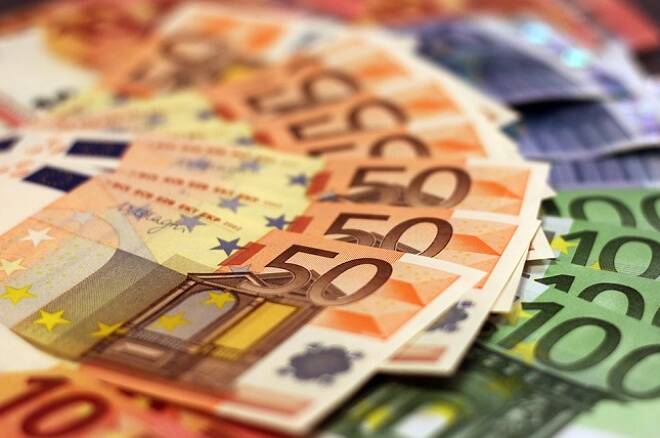Advertisement
Advertisement
The Euro Consolidates Ahead of the ECB Meeting
By:
The EUR/USD whipsawed and closed near the session highs, as the dollar was initially stronger but lost ground as risk aversion faded. Next week’s ECB and
The EUR/USD whipsawed and closed near the session highs, as the dollar was initially stronger but lost ground as risk aversion faded. Next week’s ECB and FOMC meeting will drive price action. The ECB has signaled their willingness to terminate their QE, while the Fed is widely expected to increase interest rates by 25-basis points. The German trade surplus narrowed, which reflects shrinking exports while industrial production contracted showing that the German economy is faltering.
Technicals
The EUR/USD consolidated initially moving lower but rebounding during North American Trade. Support is seen near the 10-day moving average at 1.1695, while resistance is seen near the 50-day moving average at 1.1997. Momentum is positive as the MACD (moving average convergence divergence) histogram prints in the black with an upward sloping trajectory which points to a higher exchange rate. The fast stochastic remain buoyed and is printing a reading of 83, above the overbought trigger level of 80 which could foreshadow a correction.
German trade surplus narrows
German trade surplus narrows as exports decline. Germany reported a trade surplus of EUR 18.4 billion for April, down from EUR 21.6 billion in the previous month. Exports fell -0.3% month over month, while imports rose 2.2% month over month. The unadjusted current account surplus narrowed to EUR 22.7 billion from EUR 29.6 billion, so something for Merkel to argue with in the light of ongoing criticism of Germany’s large trade and current account surpluses.
German industrial production contracted
German industrial production contracted -1.0% month over month. Expectations had been for a slight rise over the month, but after the unexpected slump in orders yesterday, the weak production number is not a total surprise. At the same time, March data were revised up to 1.7% month over month from 1.0% month over month reported initially, so the trajectory is not as weak as the headline suggests. Annual growth slowed to a still healthy 2.0%, but nevertheless the weakness in orders and surveys showing a markedly less optimistic view on the outlook confirm that the German cycle has peaked, and that growth is slowing down. Capacity constraints are partly to blame but worries about the export outlook amid an increasingly hostile trade environment are clearly also having an impact.
French production also disappoints
French production also disappoints. Like the German numbers for April, French production data came in weaker than expected, with the overall reading falling -0.5% month over month, after already declining -0.4% month over month in March. Manufacturing actually held up better and rose 0.4% month over month, after 0.3% month over month in the previous month, with the main drag on overall production coming from another slump in coke and refinery production, as well as electricity and gas. Still, the overall weakness, coupled with the disappointing German numbers adds to signs that the Eurozone recovery is already running out of steam.
U.S. Household net worth rose
U.S. Household net worth rose at a 4.2% rate in Q1 to a $100.8 trillion record-high, from a $99.7 trillion prior record-high in Q4, according to the Fed’s Z.1 report. We expect a 9% growth rate in net worth in Q2, given rising stock and home prices that should allow a 9% asset value rise after the 3.8% Q1 increase, alongside an assumed 4% liability rise after the 1.1% Q1 climb. Net worth in Q1 sat 83% above the $55.0 trillion cyclical-trough in Q1 of 2009. Asset value growth in Q1 included a 7.2% growth pace for real estate, and a 2.5% growth pace for financial asset values. Total liabilities are still just 14.7% above the $13.6 trillion cycle-low in Q1 of 2012 that marked a hefty 7.0% decline from the $14.6 trillion cycle-high in Q3 of 2008 that we have yet to exceed. Before this cycle, outright drops in liabilities were rare, as we last saw a quarterly liability decline in Q1 of 1983 with a 1.9% drop.
About the Author
David Beckerauthor
David Becker focuses his attention on various consulting and portfolio management activities at Fortuity LLC, where he currently provides oversight for a multimillion-dollar portfolio consisting of commodities, debt, equities, real estate, and more.
Advertisement
